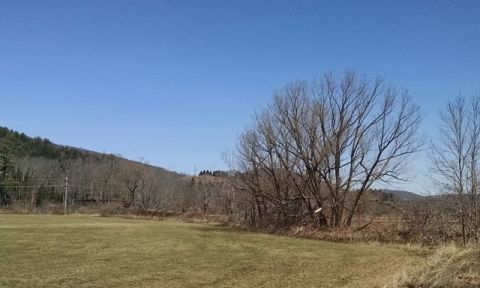
Black willow stand at Sherwoods Bridge near Delhi
Some of the most conspicuous, distinctive trees in the Catskills region are the willows. There are three types of willows commonly found in the Catskills.
First is the black willow, our most common local willow, so called because it has blackish bark and brownish twigs. It grows wild along rivers and streams and in swampy areas. Now, while the rivers and creeks are bloated with meltwater, the black willow is already beginning to flower, providing a very important early source of pollen for bees. Stands of black willow are easily spotted when driving through a valley with an extensive flat flood plain, as the trees form a line following the banks of the river, as is pictured in the photo below.
All willows are water-lovers, and develop extensive root systems to suck it up. The garden varieties must be carefully sited when they are planted because their penetrating roots will work their way up drainage pipes and block them. But the extensive root system of the black willow is a benefit to us because it binds the riverbank and provides erosion control. Willow wood has little commercial value today. In previous centuries, it was preferred in the manufacture of artificial limbs, because it is lightweight and not prone to splintering.
To find out more about the two types of willows commonly found in our gardens, follow this link to read the rest of the post about garden willows at Root's website, root2shootny.com!
Black willow stand on the West Branch, Delaware River



